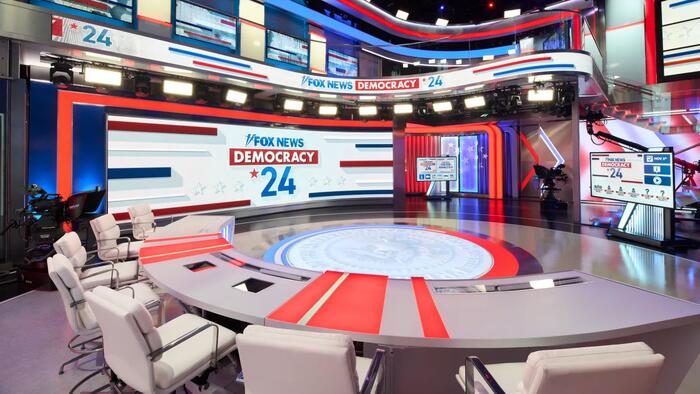In the United States, the upcoming election Tuesday marks a significant day as citizens prepare to engage in two cherished traditions: casting their votes and immersing themselves in the spectacle of election night reporting. The act of voting carries immense importance for the democratic process, and it is imperative for those eligible to actively participate. Therefore, Michael Zezas, Head of Fixed Income Research at Morgan Stanley, emphasizes the need for Americans to prioritize this civic duty. The excitement surrounding the election is further heightened by the media’s extravagant coverage, which aims to attract viewers through dynamic visuals and innovative technology.
As the nation gears up for election night, various news outlets are poised to deliver their own renditions of the event, each vying to captivate audiences through flashy graphics and engaging reporting styles. CNN presents its “magic wall,” a tool designed to enhance viewers’ understanding of the electoral map and results, while Fox offers its own flair with “Democracy 2024.” These programs not only aim to inform the public but also aspire to make the experience visually appealing and engaging. Such competitive broadcasting reflects the broader societal trends of delivering information in ways that capture audience interest.
The intricate dance of media representation during election night highlights the intersection of entertainment and civic engagement. While some viewers may seek in-depth analysis and substantial information about the electoral process, others might prefer a more entertaining experience. This divergence in viewer preferences necessitates that networks cater to a broad spectrum of audience desires, resulting in a blend of serious journalism and showmanship. As viewers prepare to engross themselves in these broadcasts, their experiences may vary drastically based on what they hope to glean from the coverage.
Moreover, the implications of how media presents election results can affect public perception and knowledge about the voting process. The narratives constructed through election night coverage may shape how audiences understand the outcomes and their significance. For instance, a network focusing on dramatic outcomes and predictions could instill a sense of urgency or excitement among viewers, while another might take a more subdued approach, emphasizing the importance of informed discussions. Consequently, the media’s portrayal of electoral events plays a crucial role in influencing public attitudes toward democracy and participation.
As the country braces for the election, there is also an underlying concern regarding the accuracy of information presented during these broadcasts. With the proliferation of misinformation and the stakes involved in elections, viewers must remain critical of the sources and the narratives being constructed. Understanding how networks operate and the motivations behind their coverage can empower individuals to make informed decisions and interpretations about the election results. It becomes vital for citizens to navigate this media landscape carefully to ensure they grasp the full context of what is at stake.
In conclusion, as Americans prepare to participate in this essential democratic exercise, the interplay between voting and media coverage is ever more significant. Both voting and following election night reports are intertwined in shaping the experience of citizenship in the United States. Citizens are encouraged to engage actively in both realms—casting their votes and critically consuming media coverage—to ensure a robust democracy that reflects the true will of the people. With every election, the importance of informed participation cannot be overstated, as the health of democracy relies on the active engagement of its citizens.

